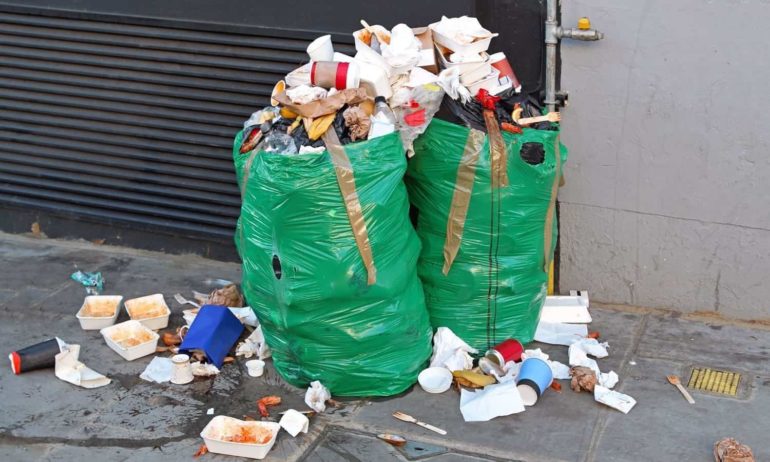
This is a guest article written by Food Tank Advisory Board Member Jonathan Bloom. Bloom is the author of American Wasteland and creator of the blog “Wasted Food.” Find him on Twitter at @wastedfood.
Don’t look now, but The New York Times is talking trash—food trash. In other words, The Old Gray Lady is giving wasted food the love it deserves.
This week’s Food section features three compelling, informative pieces on food waste, and it further indicates the rising profile of this once-ignored issue. Side note: it’s odd that an article detailing the rising food waste tide can help further raise that tide, but that’s the power of The Times. Who says newspapers are dead?
Anyway, we mostly have Kim Severson to thank for this exploration of the wasted food, which centers on her article, “Starve a Landfill.” It’s an ideal title because it connotes that vital EPA hierarchy for keeping food out of landfills.
Because waste prevention should take precedence, I wish the piece hadn’t begun with composting, which sits at the bottom of the hierarchy. Still, I was thrilled that Severson mainly focused on avoiding wasted food. And I loved the discussion toward the end about how cooking solely from recipes drives waste, as you accumulate many items you only use once. The prescribed remedy: intuitive cooking, as found in The Flavor Bible.
I did find a few items a bit off. For example, the European Union (EU) flirted with naming 2014 the Year Against Food Waste, but it never actually happened. The EU may have loosened the ban on oddities, but it left intact the far more damaging specific regulations on the size and shape of specific produce items. And while I love the artistry of the line ‘discarded is becoming delicious,’ it is alliteration over accuracy (with which I can sympathize). We’re talking about food that previously would have been discarded. Splitting hairs? Possibly. But it links avoiding waste with dumpster diving, which is a very different thing.
And I do think semantics matter. To wit: ‘expiration dates’ are a complete misnomer, with disastrous consequences. And think about the minor differences between ‘food waste’ and ‘wasted food.’ On a more positive note, whether you call them ‘broccoli stems’ or ‘broccoli,’ I couldn’t agree more with chef Daniel Humm’s description—delicious!
Along similar lines, the Food section also featured a handy accompanying article with advice on avoiding waste in your own kitchen. While the abbreviated print version is easily digested, the online one might overwhelm you with pro tips. Yet it’s a treasure of a piece, distilled culinary wisdom that we’d all do well to—literally—cut and paste. So make grandma proud and put it on your fridge. Similarly, I keep this UC Davis guide to fruit and vegetable storage (PDF) on my fridge to know where to put plumcots.
The Times’ advice comes divided by categories—produce, dairy, etc. If it’s overwhelming, try focusing on one type of food for now. I focus on avoiding food waste professionally, and I found plenty of novel ideas here. For example, brining a chicken with the brine used to make pickles. I’ve used it to flavor and moisten egg salad, but never chicken.
I was a bit surprised not to see a mention of simply shaving off mold on cheese. Maybe that tip was deemed too basic, but it’s certainly a common occurrence. Given the abundance of food waste avoidance tactics, you probably found something missing, too. If so, we’d love to hear your tips and ideas in the comments section.
And finally, there’s the quirky, provocative piece on those pesky produce stickers that are proving problematic for commercial composters. And the same can be said for backyard composters alike, which begs the question—is there a better way? Two words: Buy local. Shopping at farmers’ markets, farm stands, or even picking or growing your own eliminates the need for those PLU stickers, which convey more info than you’d imagine!
But in the supermarket world, laser branding could alter that sticker status quo. Whether it’s deemed worth the expense is another question. Without an alternate system, it’d be fun to see what wider distribution of those sticker bingo cards mentioned in the article might accomplish, with prizes that most people would want—financial incentives instead of a free bag of compost.
In the end, though, as several NYT commenters noted, it’s not really a big deal. Like any home composter, I’ve grown accustomed to those stickers sneaking into my compost pile and, later, garden. I haven’t heard many complaints from the vegetables.







